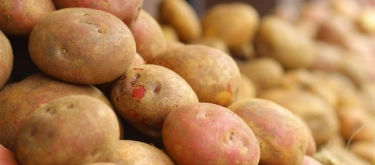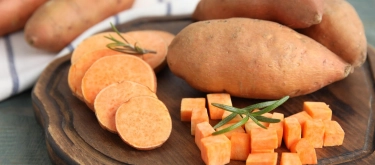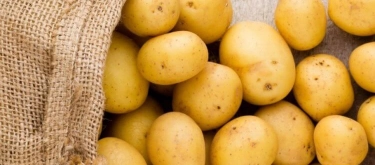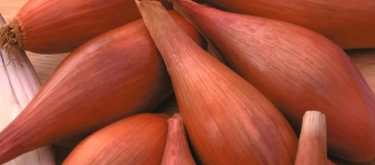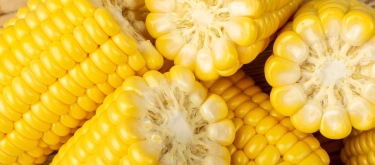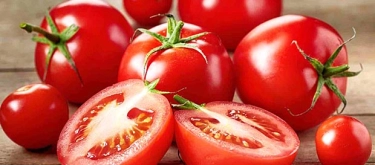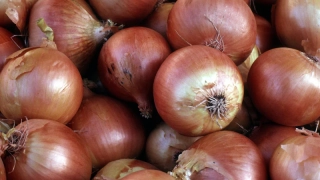Cauliflower: Taste Profile, Aroma, Benefits and Health Risks
Originating from the Mediterranean region, cauliflower has long been a staple in many traditional cuisines. Today, its neutral flavor and adaptable texture have elevated it to a modern culinary star, capable of taking on bold flavors in innovative recipes or shining on its own in simple preparations. Whether used as a low-carb rice substitute, a creamy purée, or a crisp, roasted side dish, cauliflower remains a symbol of both nutritional excellence and creative cooking.
Cauliflower is a versatile, plant-derived vegetable that is naturally vegan, gluten-free, and low in calories. Rich in fiber, vitamins (particularly vitamin C and K), and antioxidants, it makes a healthy addition to a balanced diet. Enjoy cauliflower as part of diverse culinary creations, from raw salads to hearty main dishes, and experiment with both traditional and modern recipes.
What does Cauliflower taste like?
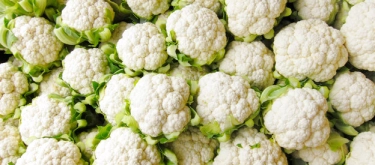
Complete Sensory Description
Taste:
Imagine the gentle, mild flavor of fresh, white clouds—a subtle nuttiness and slight sweetness that hints at the earth from which it was grown. Cauliflower offers a delicate taste that is neither overpowering nor bland, serving as a perfect canvas for various seasonings. Its flavor is like a soft whisper of nature, quietly inviting you to explore its versatility.
Aroma:
Cauliflower’s aroma is light and refreshing, with a faint, clean, and slightly sulfurous note that is characteristic of cruciferous vegetables. When roasted, it exudes a warm, nutty fragrance with hints of caramelization that add to its inviting charm.
Texture:
The texture of cauliflower is wonderfully versatile. Raw florets are crisp and refreshing, offering a satisfying crunch. When cooked, its flesh becomes tender yet retains a slight bite, yielding a creamy, melt-in-your-mouth consistency—comparable to a smooth, velvety purée.
Appearance:
Cauliflower is visually striking with its pure white (or sometimes pale green) curd-like florets set against sturdy, pale green leaves. Its natural, compact form and uniform, snow-like appearance make it a visually appealing ingredient for both rustic and contemporary dishes.
In-Depth Flavor Analysis
- Subtle, Mellow Base:
The fundamental flavor of cauliflower is its mild, almost buttery taste, with gentle earthy undertones that hint at its natural origins. - Versatile Neutrality:
Its neutral flavor makes it an ideal base for absorbing the flavors of accompanying ingredients, from robust spices to delicate herbs. - Enhanced Through Roasting:
When roasted, the natural sugars in cauliflower caramelize, adding a layer of sweetness and a nutty, toasty depth that transforms its flavor profile. - Balanced Complexity:
Whether eaten raw or cooked, the flavor of cauliflower evolves with preparation—from crisp and refreshing to soft and creamy, offering a balanced interplay of mild sweetness and earthy richness.
Culinary Applications
- Roasted Cauliflower:
Toss florets with olive oil, salt, and your favorite spices (like cumin or paprika) and roast until golden and crispy on the edges—a perfect side dish. - Cauliflower Rice:
Pulse cauliflower in a food processor to create a low-carb, nutrient-dense alternative to rice, ideal for stir-fries and grain bowls. - Creamy Purées and Soups:
Boil or steam cauliflower and blend with herbs and a touch of olive oil or plant-based cream to create smooth, velvety soups and purées. - Salads and Slaws:
Use raw, lightly steamed, or pickled cauliflower as a crunchy addition to salads and slaws, adding both texture and subtle flavor. - Innovative Dishes:
Incorporate cauliflower into fusion recipes such as cauliflower steaks, pizzas, or even desserts, where its neutral flavor adapts beautifully to creative culinary techniques.
Selection and Storage
Selecting Cauliflower:
- Choose heads that are firm and heavy for their size, with compact, white florets free of dark spots or blemishes.
- The leaves should be vibrant and fresh, indicating the vegetable’s overall quality.
Storage Recommendations:
- Store whole cauliflower in the refrigerator, wrapped loosely in a perforated plastic bag, to maintain freshness for up to a week.
- For longer storage, consider blanching and freezing the florets in an airtight container.
- Avoid washing until ready to use, as excess moisture can lead to premature spoilage.
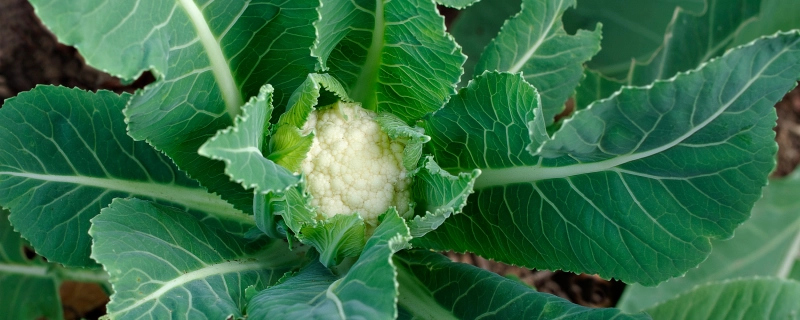
Nutritional Insights
- Rich in Vitamins:
Cauliflower is an excellent source of vitamin C, vitamin K, and several B vitamins, supporting immune function and overall health. - High in Fiber:
Its high fiber content promotes healthy digestion and aids in maintaining satiety. - Low in Calories:
Despite its nutrient density, cauliflower is low in calories, making it ideal for weight management. - Antioxidant Benefits:
The antioxidants in cauliflower help combat oxidative stress, contributing to long-term health. - Versatile Nutrient Profile:
This vegetable’s low carbohydrate and fat content make it suitable for a variety of diets, including ketogenic and plant-based lifestyles.
Expert Insights & Culinary Tips
- Cooking Methods Matter:
Experts recommend different cooking techniques to suit your desired texture—light steaming preserves its crunch, while roasting brings out its natural sweetness and nutty flavors. - Seasoning Strategies:
Pair cauliflower with bold spices and herbs such as turmeric, cumin, rosemary, or thyme to enhance its subtle flavor without overpowering it. - Innovative Uses:
Experiment with turning cauliflower into “steaks” by slicing it thickly and grilling, or use it as a base for creative, plant-based pizzas. - Avoid Overcooking:
To maintain its nutritional value and texture, be cautious not to overcook cauliflower, as this can lead to a mushy consistency. - Presentation Ideas:
For a visually appealing dish, serve roasted or grilled cauliflower on a bed of fresh greens with a drizzle of tahini or lemon dressing, adding both color and flavor contrast.
Interesting and Curious Facts
- Ancient Cultivation:
Cauliflower, a member of the Brassica family, has been cultivated since Roman times, originally prized for its unique appearance and versatility in cooking. - Color Transformations:
Although traditionally white, cauliflower now comes in vibrant colors like purple, orange, and green, each variant offering slightly different nutritional benefits and flavor nuances. - Culinary Adaptability:
Modern culinary innovators have transformed cauliflower into everything from rice substitutes to pizza crusts, showcasing its remarkable versatility. - Cultural Symbol:
In many cultures, cauliflower is celebrated for its simplicity and adaptability, often symbolizing the ingenuity of plant-based cuisine. - Sustainability Icon:
As a widely grown, nutrient-rich vegetable, cauliflower is becoming a key player in sustainable agriculture and global food security.
How to Enjoy Cauliflower
- Roasted Perfection:
Toss cauliflower florets with olive oil, salt, and spices, then roast until edges are crisp and golden, creating a deliciously satisfying side dish. - Cauliflower Rice:
Process cauliflower into rice-like grains and sauté lightly for a low-carb alternative that pairs perfectly with stir-fries and curries. - Creamy Soups and Purées:
Boil or steam cauliflower and blend it into a velvety soup, enriched with herbs and a touch of plant-based cream for a comforting meal. - Fresh Salads:
Add raw or lightly steamed cauliflower to salads for a crunchy, refreshing texture that complements fresh vegetables and dressings. - Innovative Recipes:
Try inventive dishes like cauliflower steaks, pizza crusts, or even a flavorful, spiced cauliflower mash to explore new dimensions of this versatile vegetable.
Harm and Dietary Considerations
- Digestive Sensitivity:
Some individuals may experience digestive discomfort when consuming large amounts of cruciferous vegetables like cauliflower due to its fiber content and natural compounds. - Thyroid Considerations:
Raw cauliflower contains goitrogens, which can interfere with thyroid function in sensitive individuals; cooking can reduce these compounds. - Caloric and Carbohydrate Density:
While nutritious, cauliflower is relatively low in calories but may be over-consumed if used excessively in low-carb diets. - Allergen Awareness:
Although rare, some people may have mild sensitivities to cruciferous vegetables—monitor your body’s response when introducing it to your diet. - Storage Precision:
Improper storage (excess moisture or high temperatures) can lead to spoilage or loss of texture; ensure proper storage as described above.
Final Thoughts & Sensory Journey
Embark on a final sensory journey with cauliflower—a vegetable that transforms with every preparation. Picture the crisp, golden florets emerging from a hot oven, releasing a warm, nutty aroma that fills your kitchen with comfort and anticipation. Whether you enjoy it as a crispy roasted side, a smooth purée, or a creative low-carb alternative to rice or pizza, cauliflower’s delicate balance of earthy sweetness and subtle flavor makes it a culinary chameleon. Let its versatile, nutritious nature inspire your next meal, transforming everyday dishes into a feast of taste, color, and wholesome delight.
References
- McGee, H. (2004). On Food and Cooking: The Science and Lore of the Kitchen. New York: Scribner.
- Food and Agriculture Organization of the United Nations. (2018). "Brassica Vegetables: Nutritional and Agricultural Insights."
- Journal of Agricultural and Food Chemistry. (2017). "Health Benefits of Cruciferous Vegetables: A Focus on Cauliflower."
